I was at Tipu Sultan’s Palace in Bangalore two days ago. It was a cloudy evening and there wasn’t much light when we got there, but nevertheless managed to take a few pictures. The palace has a series lovely wooden pillars. The palace is entered through an airy hall open at one side, which leads to a few plain rooms. The first floor, reached through stairs at both sides of the hall have a gallery from where, it appears, the Sultan addressed his subjects. When I climbed up the gallery, I was surprised to see that the palace is symmetrical and has another large hall to the other side.
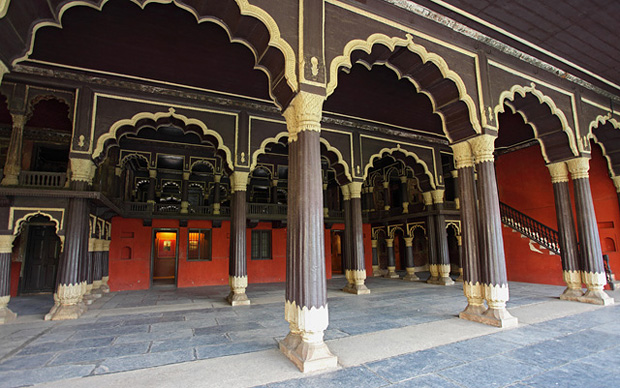
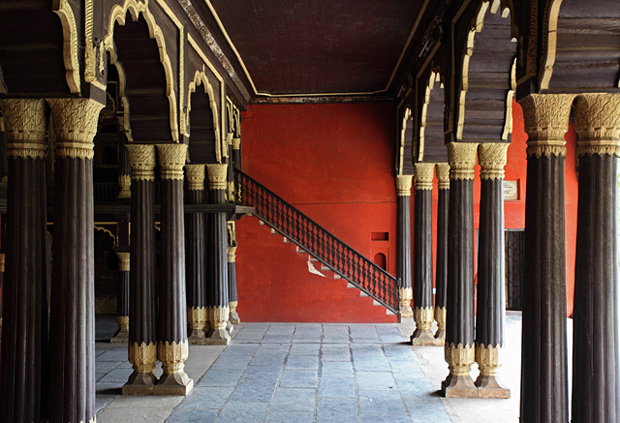
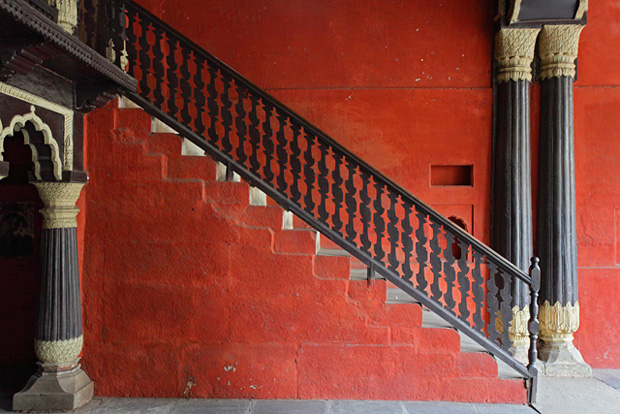
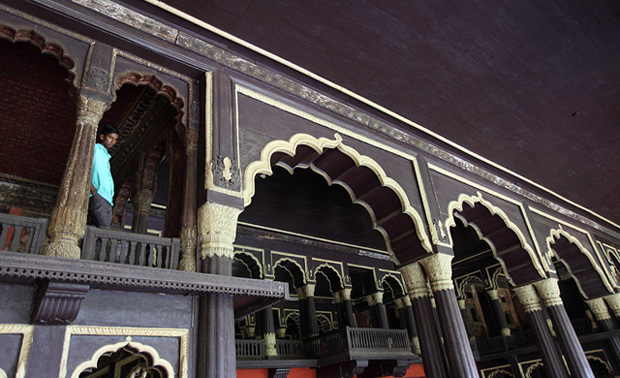
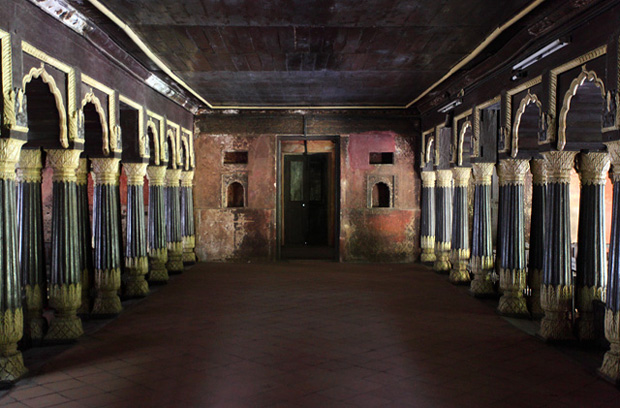
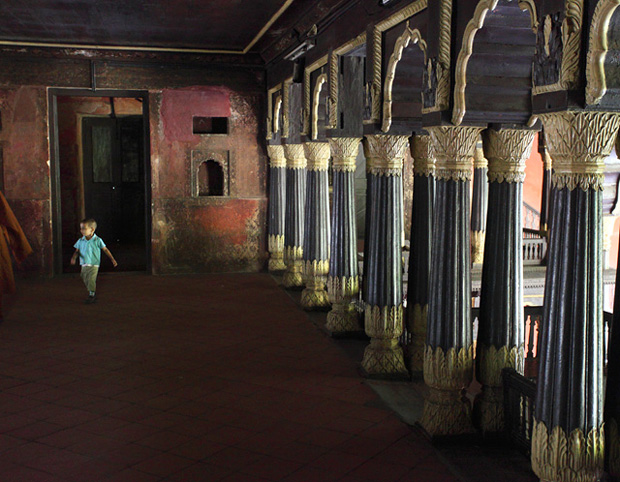

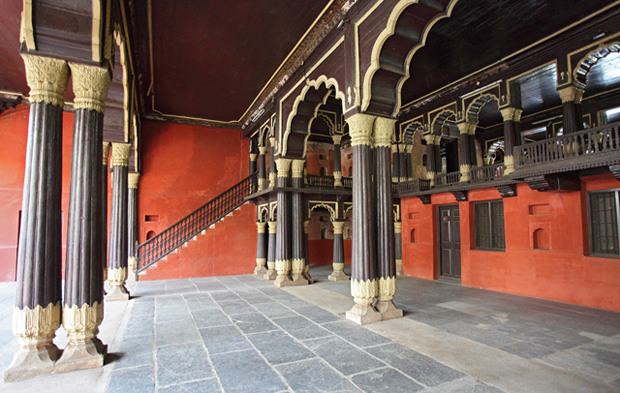
This article appeared in March issue of Terrascape
One would not expect to find a 900-year old temple in a non-descript village with a tongue twister name like Doddagaddavalli. Driving past gently undulating vistas sparingly dotted with stout trees and small irrigation ponds – they added a dash of beauty to the widespread vegetable fields – I suddenly encountered a colourful sign by the road that announced the presence of an ancient temple. Turning off the main road and going past a small village with its usual share of chickens and cows that blocked my way, I found myself gliding from the top of a mound, down an easy slope. At the base of the valley was a small black structure of stone, a temple with shrines rising up from all its corners, a saffron flags fluttering over one of those projections. Its location could not have been better, situated at the edge of the village overlooking a lake and visible from every crest of the wavy landscape that surrounded it.
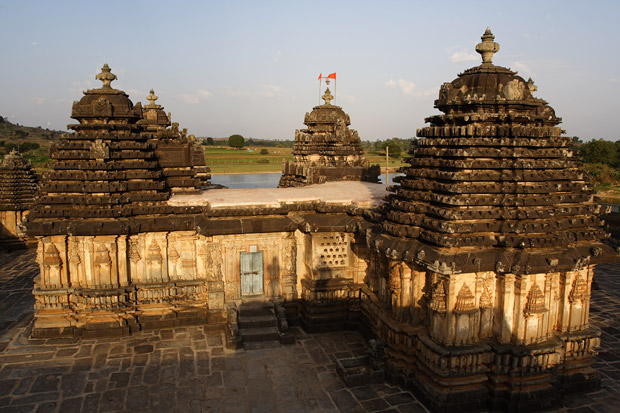
Lakshmidevi Temple at Doddagaddavalli
The Lakshmidevi temple at Doddagaddavalli is just one of the thousands built by the Hoysala Kings who ruled a large part of South India for more than three hundred years. Returning here again a few weeks later with a small group of history-enthusiasts, I saw a few eyebrows going up in amazement when I casually mentioned that the Hoysala Kings built 1521 temples in 948 centres. It is not much, considering that it averages to about five temples every year during their long tenure of governance. But what is impressive is that 434 of these temples have survived even today, with the oldest of them built more than 1000-years ago, the most recent having survived no less than 600-years.
Spituk was the first monastery I visited in Ladakh. A few pictures from the visit.
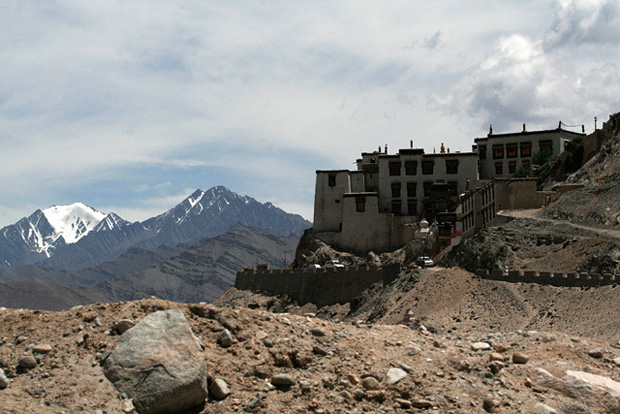
Spituk Monastery, like all monasteries in Ladakh, is located on a hill overlooking the village. River Indus flows behind the monastery, beyond which are the tall mountains capped with ice. On the other side of Spituk is a very different landscape where the wide valley of Indus is used in constructing the Leh Airport and the army installations. At less than 10km from Leh, Spituk it is almost ready to be consumed by the expanding town.
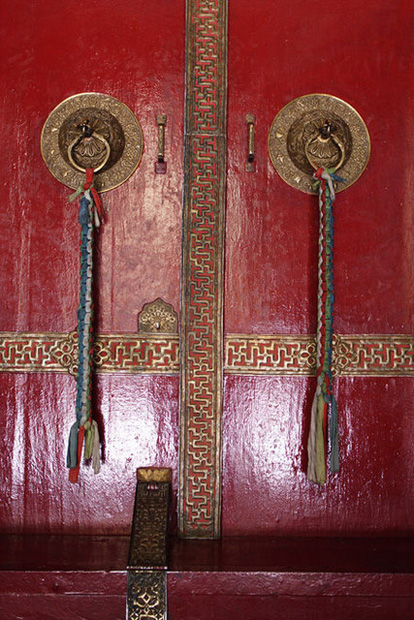
The colourfully painted doors of dukhang (prayer hall) in Spituk Monastery.
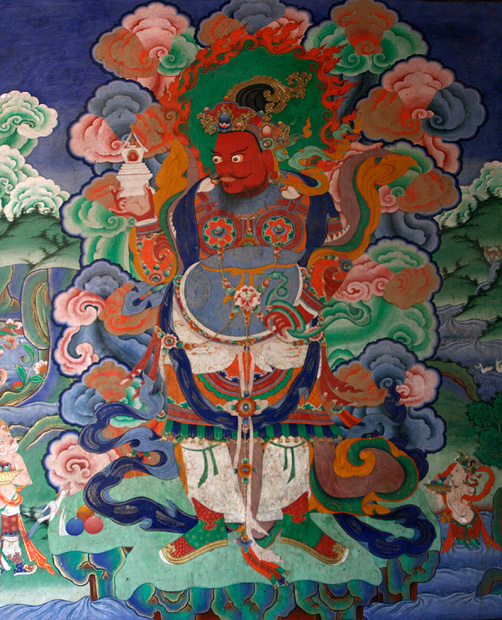
A mural of Virupaksha (also called Chanme-Zang), the lord of the west direction. The front wall of the prayer hall in every monastery is usually painted with images of guardians dieties of four directions.
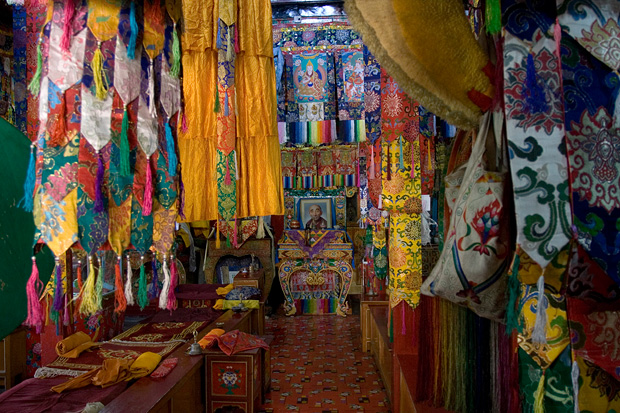
Colourful decorations in the prayer hall of Spituk Monastery.
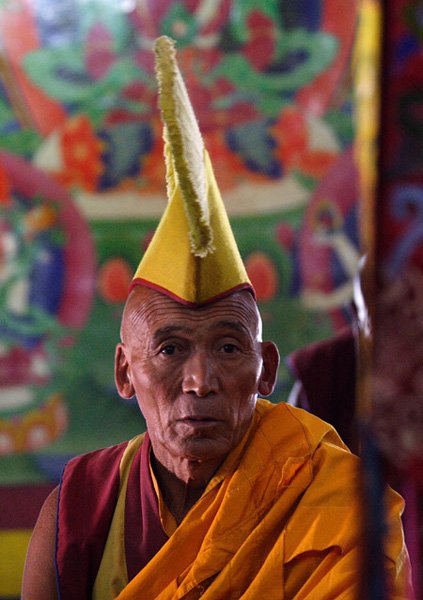
A monk wearing the traditional yellow hat of the gelug pa lineage at Spituk Monastery.
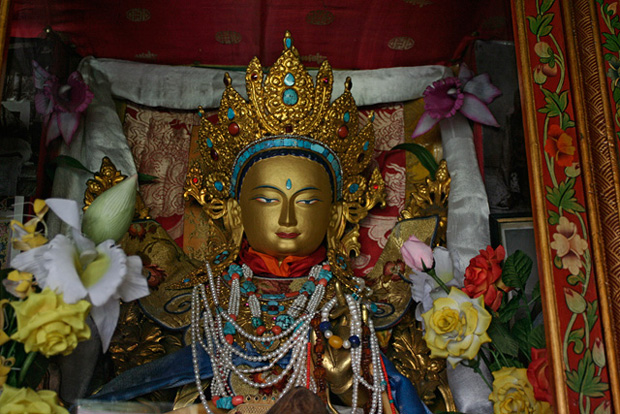
A statue of Tara (also called Dolma), a female Bodhisattva. Spituk Monastery has a room dedicated to images of Tara, called Dolma Lhakhang or the Temple of Tara














